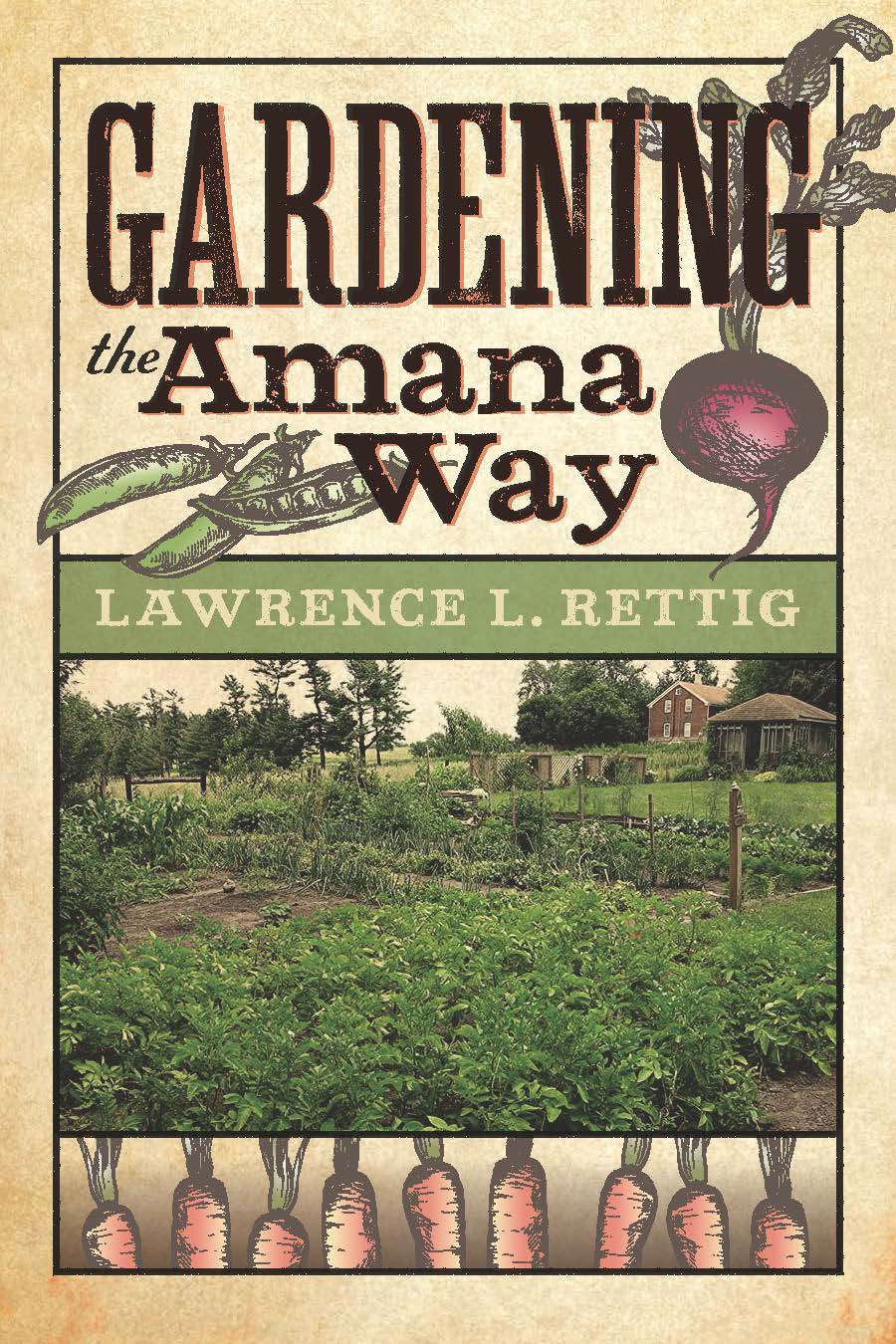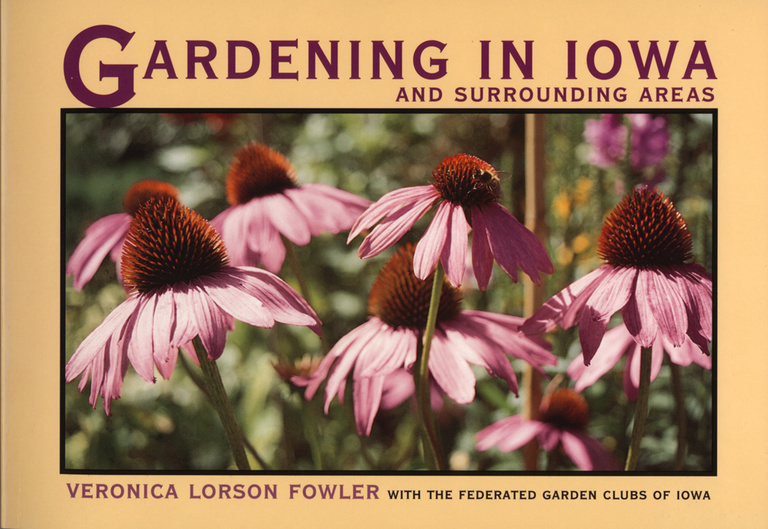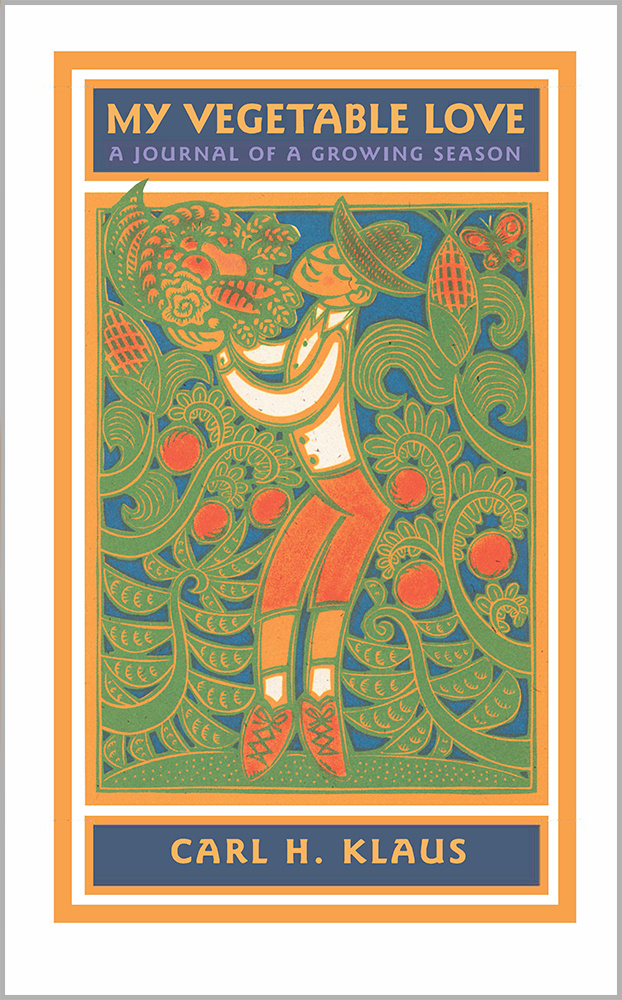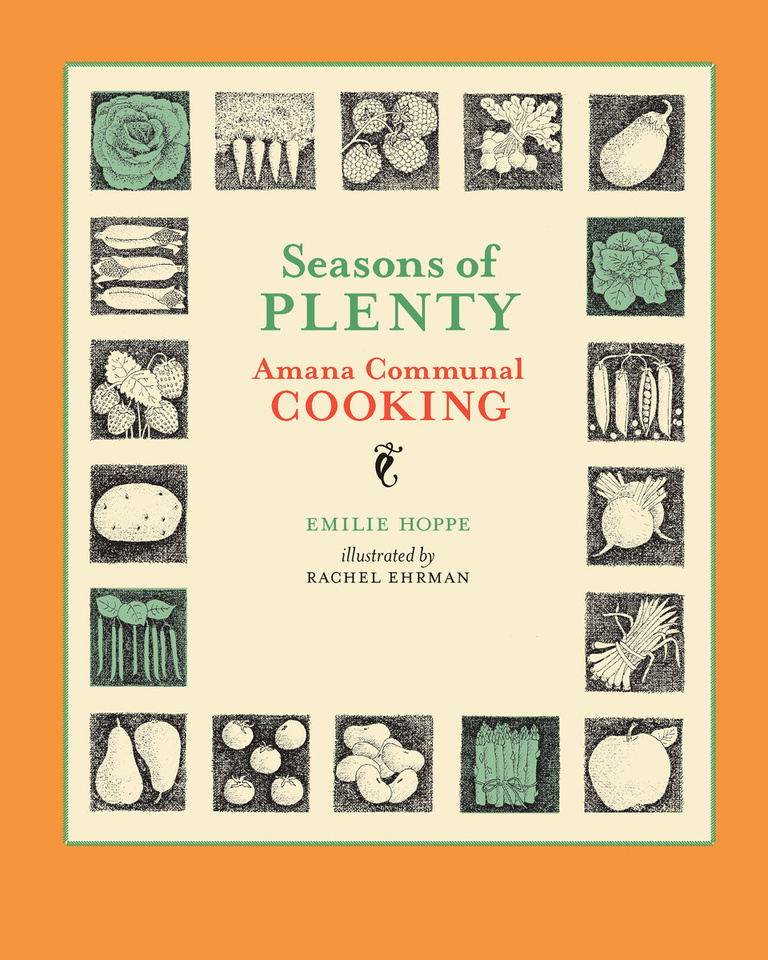Gardening in Iowa’s Amana Colonies is the culmination of techniques that stretch back several centuries to central Europe, when adherents to a new faith called the Community of True Inspiration formed their own self-reliant communities. As a child of parents who were part of the communal life of the Amana Society, Larry Rettig pays homage to the Amana gardening tradition and extends it into the twenty-first century.
Each of the seven villages in Amana relied on the food prepared in its communal kitchens, and each kitchen depended on its communal garden for most of the dishes served (the kitchens in Rettig’s hometown produced more than four hundred gallons of sauerkraut in 1900). Rettig begins by describing the evolution of communal gardening in old Amana, focusing especially on planting, harvesting, and storing vegetables from asparagus to egg lettuce to turnips. With the passing of the old order in 1932, the number of the society’s large vegetable gardens and orchards dwindled, but Larry Rettig and his wife, Wilma, still grow some of the colonies’ heirloom varieties in their fourth-generation South Amana vegetable garden. In 1980 they founded a seed bank to preserve them for future generations.
Rettig’s chapters on modern vegetable and flower gardening in today’s Amana Colonies showcase his Cottage-in-the-Meadow Gardens, now listed with the Smithsonian in its Archives of American Gardens. Old intermingles with new across his gardens: heirloom lettuce keeps company with the latest cucumber variety, a hundred-year-old rose arches over the newest daylilies and heucheras, and ancient grapevines intertwine with newly planted wisteria, all adding up to a rich array of colorful plantings.
Rettig extends his gardening advice into the kitchen and workroom. He shares family recipes for any number of traditional dishes, including radish salad, dumpling soup, Amana pickled ham, apple bread, eleven-minute meat loaf, and strawberry rhubarb pie. Moving into the workroom, he shows us how to make hammered botanical prints, Della Robbia centerpieces, holiday wreaths, a gnome home, and a waterless fountain. Touring his gardens, with their historic and unusual plants, will make gardeners everywhere want to reproduce the groupings and varieties that surround Larry and Wilma Rettig’s 1900 red brick house.
“Since the nineteenth century, visitors to the Amana Colonies have been struck by the well-tended flower and vegetable gardens, orchards, and vineyards found there. In Gardening the Amana Way, Lawrence Rettig, who was raised in this gardening tradition, presents the treasure trove of knowledge that he has gained through decades of tending his own garden in the Amanas. Rettig has written an entertaining book that will be of special interest to gardeners and cooks, and to those who remain fascinated by the unique culture that is Amana."—Peter Hoehnle
"Like a well-tended garden, Gardening the Amana Way treats us to a pleasing variety: we glean some history, gardening techniques, vegetable and flower varietals, recipes—even a garden tour. The growing interest in local foods makes Rettig’s account of how Amana’s communal, village-scale gardening traditions inspire his Cottage-in-the-Meadow garden especially timely."—Lanny Haldy, executive director, Amana Heritage Society
"Rettig has succeeded in the challenging task of providing a most interesting garden book that also provides insights into the interrelationships between garden and kitchen in one of our longest-lived communal societies. An intriguing blend of nature and culture with an insider’s perspective, Gardening the Amana Way is a blend of plant list, gardener’s almanac, and sustainability guide. It is as thoughtfully woven together as a traditional Amana blanket. The Gardebaas (garden boss) and the Kichebaas (kitchen boss) would be proud!"—J. Timothy Keller, Iowa State University



